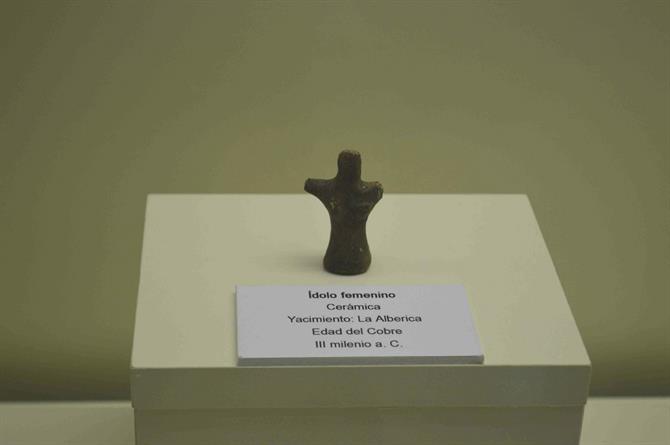Estepona is one of Costa del Sol's most popular holiday resorts. With its beautiful historic centre and elegant port, it is an unmissable holiday destination that attracts thousands of travellers every year.
That being said, Estepona has a lot more to offer than just a pretty city and gorgeous beaches. In recent years, the city has made big developments in its cultural sector, resulting in the Estepona poetry route and a series of giant painted murals throughout the city.
In addition, the city's museums have also been invested in; this includes the archeology museum, the bullfighting museum, and the ethnological museum.
You'll find most of Estepona's museums centred around the bullring, and you can read more about each in the guide below.
The Archaeological Museum
In the Old Town Hall, at Plaza Blas Infante, is the regional archeology museum. The museum houses more than 400 artifacts from different time periods, with the oldest piece from the Palaeolithic Period, also known as the Old Stone Age. Some artifacts are up to 100,000 years old.

One of the most valuable artifacts in the museum is a small clay figure called la Venus de Estepona; it is believed to be over 5000 years old. The figure, which stands at only 5 cm tall, was found in 2011 during preparatory excavations prior to the construction of a hospital. La Venus de Estepona has contributed to crucial knowledge of prehistoric settlements in the area.
Admission: Free
Opening hours: Monday 09:00-15:00, Tuesday-Friday 10:00-20:00, Saturday 10:00-14:00 and 16:00-20:30
Bullring
Most of the city's museums are located at the bullring. The arena itself is also worth a visit.
The Estepona bullring was built in 1972 and designed by Juan Moro Urbano. Its asymmetric design does not exist elsewhere in the world. Many seating levels are arranged around the arena, and the shady side has more space than the sunny side. The top level can be accessed via an external ramp without climbing the stairs.
In the past, there have been up to 16 bullfights per year in the arena, but today bullfights are only held during the town's feria. The arena is also used for concerts and outdoor theatre during the summer, and every Sunday there is a market where you can purchase local goods.
In the building adjacent to the bullring, there are four museums. The following practical information applies to all of the museums, and you can read more details about each museum below.
Admission: Free
Opening hours: The museums are open every day from 9:00-16:00.
Address: Calle Matías Prats, Plaza de Toros, 29680 Estepona
Antonio Ordonez Bullfighting Museum
The bullfighting museum is named after a local bullfighter, Antonio Ordonez, who helped finance the bullring. Antonio's grandson, Francisco Rivera Ordonez, inaugurated the museum. The collection contains a wealth of posters, images, costumes, props, and bulls heads, that together provide a broad understanding of the art of bullfighting.
Whether you are for or against bullfighting, it is a moving experience to walk among the colourful and dramatic items that make up the museum. You can also look into the stable from which the bulls are released into the arena.
Museum of Image and Sound
El Museo de Imagen y Sonido was established in 2004 under Estepona's annual film festival and is a tribute to Spanish director Luis Garcia Berlanga. At the museum, you can see a collection of cameras and other historical items from the Spanish film and music industry.
The museum consists of three small rooms. In Maria Isbert Hall you'll find an exhibition of posters, brochures, and souvenirs from the city's film festivals, as well as items donated by actors who have visited Estepona. In Pasaje Musical de los Spring you can see musical instruments and posters from the main concerts that have taken place in Estepona. In Edgar Neville Hall there is a collection of old cameras and projectors.
Palaeontology Museum of Estepona
This museum houses one of the largest collections of fossils, with over 2000 fossils from 600 different species of flora and fauna. Most were found around Estepona and come from the Pliocene Epoch, which stretches from just over 5 million years to just over 2 million years B.C.
You can follow the evolution of individual species, and in certain fossils you'll see that the original colours are still preserved. The collection attracts researchers from around the globe who come to study the many fossils. The museum is also home to ten impressive replicas of dinosaur skeletons found in Argentina.
The Ethnographic Museum
The Museum of Ethnography - the study of particular cultures and traditions - contains about 2000 artifacts that paint a picture of life in Estepona in the past.
The museum was previously called El Museo de Aperos del Campo y del Mar (Museum of Agricultural and Fishing Tools). This name gives a good idea of the primary themes the museum covers; you'll find everything from fishing nets and fishing boats, to agricultural tools, to an old-fashioned soda machine.
Necropolis Prehistórica Corominas
This museum is located above the city and can only be visited by prior arrangement. In the museum, arranged underground, you can see a 5000-year-old megalithic tomb, which was discovered in 2001. "Megalithic" refers to a way of building monuments; structures were made from huge stones, standing together without any binders.
Here you can see five well-preserved tombs, skeletons, and various objects that were buried with the deceased (tools, vases, beads, and seashells).
Admission: 3 €
Address: Parque Municipal San Isidro Labrador, 29680 Estepona
Reserve your visit by calling +34 654 71 17 15
